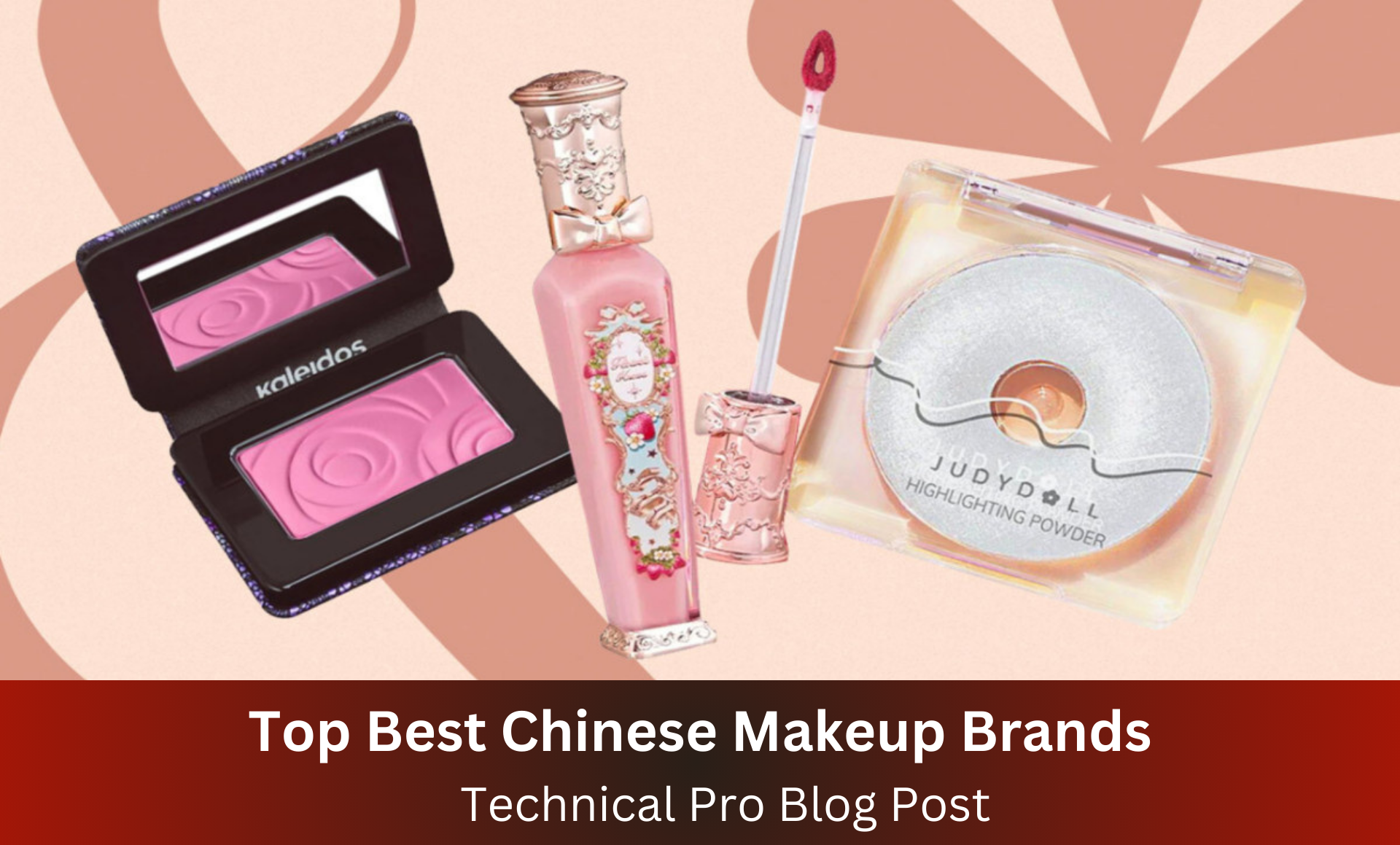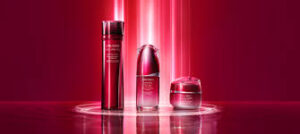Top Best Chinese Makeup Brands And Companies
Chinese Makeup Brands In today’s dynamic and rapidly developing beauty industry, China has become an important market for international and domestic cosmetic brands.
The market, which was worth 44 billion US dollars in 2020, is expected to reach 70 billion US dollars in consumer goods in 2025.
With this growth, there was also an explosion in the number of cosmetic products offered to Chinese consumers. China’s beauty industry continues to evolve with the emergence of new brands. It’s an exciting time for beauty lovers in China and the possibilities are endless.
20 Chinese Makeup Brands Most Popular
Top 20 best popular makeup brands in china details:
L’Oréal

L’Oréal has succeeded in doing business in China by focusing on quality, innovation and customer service. The company has a deep understanding of consumers in China and is able to meet their needs with a variety of products and services. L’Oréal is also committed to operating responsibly and sustainably, which is important to many consumers in China. What should you know about them?
L’Oreal’s range of cosmetics and skin care products has won the trust of many customers with its excellent products. As one of the world’s leading beauty brands, L’Oréal’s brand image attracts the attention of luxury-seeking Chinese Makeup Brands consumers.
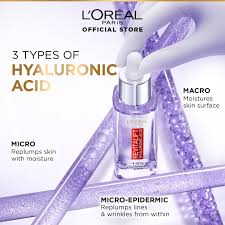
The brand often collaborates with Chinese celebrities to promote its products, making it popular among fans and followers. L’Oréal makes good use of social media platforms such as Weibo and WeChat to engage with its audience and provide valuable content on beauty tips and product information.
L’Oréal offers products specifically designed for Asian skin. The brand is easily available through many online stores such as Tmall Global and JD.com. This allows customers to easily purchase their favorite L’Oréal products at home.
safe and reliable products used in China. Partnering with key leaders in China allows L’Oréal to reach a wider audience. It also has a significant impact on potential customers’ purchasing decisions.
L’Oréal continues to expand its customers who want to participate in events such as the 618 Shopping Festival and benefit from special discounts at such events. Some L’Oréal products sold in China are produced domestically.
Estee Lauder Chinese Makeup Brands
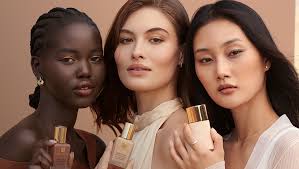
Estee Lauder is known for its beauty and skin care products. The luxury brand has a wide range of products to meet the diverse tastes and needs of consumers in China.
Estée Lauder invests heavily in digital marketing strategies such as partnerships with local influencers (KOLs) and celebrity endorsements. Additionally, online sales revenues increased in major markets such as China. Thanks to e-commerce platforms like Tmall Global for supporting the growth of his business.
has been very successful for Chinese customers; loves to listen and retain loyal customers. They believe that L’Oréal and other French brands have represented goodness and quality for generations.
Lancôme Chinese Makeup Brands
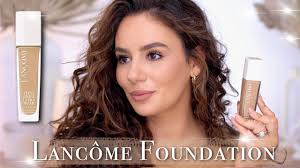
Lancôme is a major player in China’s luxury cosmetics industry with its premium skincare, makeup and beauty products. Their popularity stems from their collaborations with Chinese celebrities (Hanashiko, Colorkey, and Judydoll), their efficient use of e-commerce, their high rankings in popular surveys, their social ties, and their participation in the Chinese painting process.
Lancôme China Chapter
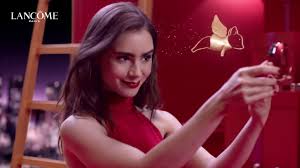
Maybelline is one of China’s most popular makeup brands and is loved by young and mature consumers in China. The aim of the brand is to make cosmetics good for everyone. This resonates with Chinese buyers looking for quality products at affordable prices.
Maybelline’s most famous product is mascara. It has become the best-selling product in China since its launch. A strong focus on innovation and working with local influencers (KOLs) also contributed to his vision.
Maybelline has entered e-commerce platforms such as Tmall and JD.com. Their participation in social media campaigns aimed at young consumers has increased the company’s sales in recent years.
Channel Chinese Makeup Brands
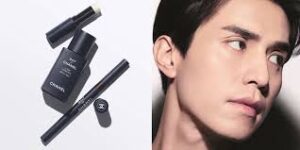
Chanel is one of China’s luxury cosmetic brands. Here are some reasons:
Chanel is known as a high-end brand that speaks of quality and luxury. The product was recommended by many Chinese scientists such as Liu Wen and Bai Baihe.
Chanel focuses on beauty and fashion. This is important for young consumers who want to learn about new trends in China. The company has developed its product line to meet the unique needs of Chinese customers. They create makeup that suits Asian skin tones.
Chanel has a strong influence on social media such as Weibo and WeChat, where she interacts with fans and shares tips on how to use her products. The brand also sells its products through major e-commerce sites. That’s why Chinese customers can buy their favorite Chanel products online.
M.A.C Chinese Makeup Brands
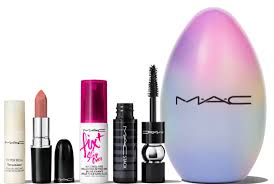
This Canadian company offers a wide range of cosmetics suitable for all skin types and tones. Like other companies, M.A.C has collaborated with many Chinese celebrities and influencers to promote its products. They helped make the brand popular among young consumers in China.
M.A.C creates special collections that suit local tastes and trends, inspired by Chinese celebrations such as Lunar New Year. These strategies further increase sales through the e-commerce platform.
Dior Chinese Makeup Brands
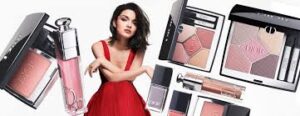
Dior’s quality products follow the preferences of consumers in China. They work with top Chinese celebrities and models to promote their products. Also collaborate with local key leaders (KOLs) and influencers on social media such as Weibo and WeChat.
You can find it on e-commerce platforms such as Tmall and JD.com. They invest in digital marketing campaigns aimed at promoting their products to Chinese consumers.
Dior’s main products in China include the Dior Enchantment lipstick collection, Eternal Foundation and the iconic Jadore fragrance collection. As demand for luxury cosmetics continues to grow in China, Dior continues to attract the attention of Chinese consumers.
YSL Chinese Makeup Brands
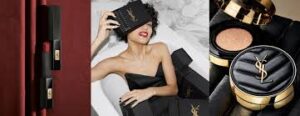
YSL has become renowned for its luxury and high-end beauty. Consumers in China loved the product’s signature lipstick design and beautiful packaging. These products have become local brands alongside other international brands such as L’Oréal and Estée Lauder.
YSL’s brand identity also has an important share in its success. Consensus and collaboration with local stakeholders helps promote their products.
Olay Chinese Makeup Brands
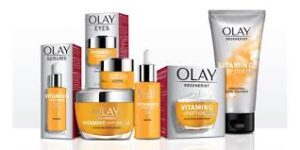
Olay has been in the Chinese market for over 20 years and has become a trusted brand for Chinese consumers. Olay focuses on research and innovation and continues to develop products that meet the needs of consumers in China. The formula contains Chinese herbal ingredients such as sunflower seeds.
one Reasons for reputation include quality products, guaranteed results, adaptation to the Chinese market, unique designs and packaging, cooperation with people like Chinese, having a good social network and presence in the e-commerce market.
Kiehl’s Chinese Makeup Brands
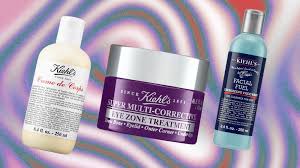
The company was founded in 1851 but was only recently introduced to the Chinese market.
Still, Kiehl’s has earned the trust of beauty enthusiasts in the country. One of the reasons for their popularity is their focus on natural ingredients and scientific research.
Chinese consumers are increasingly aware of the importance of using natural products that will not harm their skin in the long term. Kiehl’s commitment to this philosophy helps them stand out from other brands.
Clinique
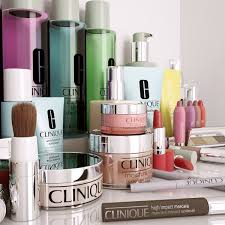
Clinique is an American brand, is loved by consumers in China for its quality and functional skin care and makeup products. Here are some reasons why Clinique is so popular among Chinese beauty enthusiasts:
Clinique’s “three-step skin care” is very popular among Chinese women who care for their skin every day. Foundations, powders and concealers are suitable for all skin types. Clinique cosmetics are made without parabens, phthalates or fragrances.
Collaboration with famous people and famous people in China helps increase name recognition among young people. The brand’s online presence on e-commerce platforms makes it easier to target customers in China.
Shiseido Chinese Makeup Brands
Shiseido is a Japanese brand. It was founded more than 140 years ago.
Skin care products are especially popular among Chinese consumers who value beauty standards and good skin care. Shiseido emphasizes natural ingredients and anti-aging products.
one Collaborations with Chinese celebrities such as
Yang Mi also help increase the awareness of the business. As sales increase in China’s competitive cosmetics market.
Innisfree
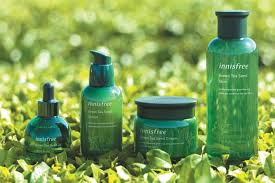
Innisfree is a famous Korean cosmetics brand that has become quite popular in China in recent years. Here are some reasons for its success:
Innisfree collaborates with Chinese influencers to market its products. The brand took into account the preferences of Chinese consumers and updated its products accordingly. They create a skin care line using green tea and other natural ingredients popular in China. Innisfree focuses on using natural ingredients.
one 4,444 products are sold on Tmall and JD.com and are available to online shoppers nationwide. The brand has Weibo and WeChat accounts where it shares product information and content and interacts with fans.
Laneige Chinese Makeup Brands
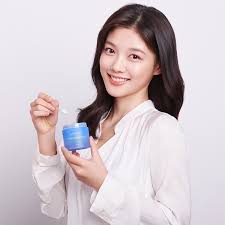
Laneige managed to attract the attention of Chinese consumers with its beauty and make-up products.
Originating in South Korea, Laneige follows local preferences and trends and adds Chinese herbal ingredients to some products: rice extract with a brightening effect.
brand collaborated with actor Jing Tian to promote its products on Weibo and WeChat. Laneige has a strong online presence on Tmall Global and JD.com. This allows Chinese customers to easily purchase their favorite Laneige products in just a few clicks.
Sulwhasoo
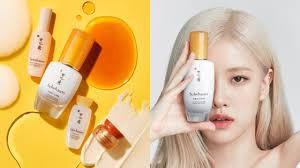
Sulwhasoo is famous for its Korean herbal ingredients and traditional beauty concept.
Sulwhasoo’s best-selling products in China include Concentrated Ginseng Rejuvenating Cream and Night Vitality Mask.
The brand collaborated with Tang Yan to promote products in China. Sulwhasoo has also customized its products to meet Chinese consumers’ preferences for skin whitening and anti-aging products.
one 4,444 consumers in China want to learn more about beauty products with natural and traditional ingredients.
Bobbi Brown Chinese Makeup Brands
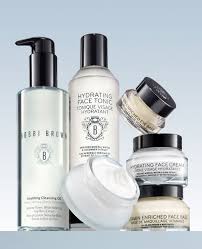
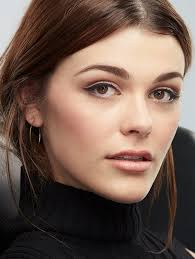
Bobbi Brown is known for her natural and simple look. They collaborate with Chinese influencers like Feifei Sun and Victoria Victoria. Actress Zhang Ziyi also introduced their names.
. Beauty products are loved by Chinese consumers, including Bobbi Brown’s beloved Long Wear Gel Eyeliner. They have launched a unique collection to suit Chinese skin tones and consumer preferences.
They interact with fans on Weibo and WeChat to learn about the latest trends in the Chinese beauty industry. Bobbi Brown is sold in airports all over China, making its products easily accessible to tourists and travelers.
NARS Chinese Makeup Brands
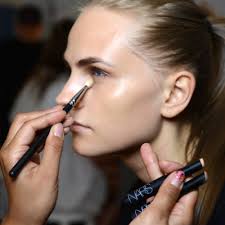
NARS™’s avant-garde and bold products are recognized by the Chinese beauty industry. Famous blush shades such as “Orgasm” and “Beyond Blush” have become a must-have in many Chinese makeup collections.
NARS™ beautiful packaging and beautiful designs are popular with Chinese customers. The brand also recruited actors supported by Liu Yifei and Zhou Dongyu.
Neutrogena
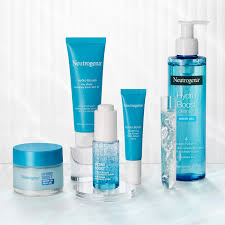
Neutrogena is an American brand founded in 1930.
In China, Neutrogena is establishing itself as a science-driven brand that uses advanced technology to create effective skin treatments. Neutrogena’s most popular products in China include the Hydro Boost hydrogel moisturizer and deep cleanser.
Neutrogena has a strong online presence in China and sells its products through e-commerce platforms. The company also collaborates with Chinese influencers and celebrities to promote its products on social media platforms.
In 2021, Neutrogena announced “Netrogena Bright Boost,” a new product designed specifically for the Chinese market.
Shu Uemura Chinese Makeup Brands
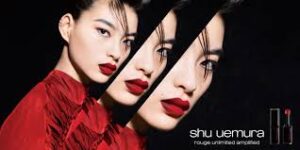
Shu Uemura is a famous Chinese cosmetics brand known for its quality products and innovative beauty methods. It was designed by Japanese artist Shu Uemura. The company has gained a customer base in China that appreciates natural ingredients and unique designs.
Factors Contributing To Their Popularity In China
Celebrity Endorsements
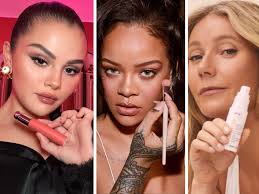
Celebrities are considered influential by many consumers in China, and their endorsements can increase sales for cosmetic companies. For example, L’Oréal chose the famous actor Zhang Ziyi as its spokesperson to promote the beauty of the Chinese market.
Local celebrities such as Angelababy and Zhao Liying have successfully launched the Diary cosmetics line, which is entirely based on online marketing aimed at young consumers in the city.
Digital Marketing
With over 900 million online users and growing social media platforms like Weibo and WeChat, it’s no surprise that these brands are investing heavily in their online presence. Using influencers or key opinion leaders (KOLs) is especially good because many consumers trust the opinions of influencers they follow online.
For example, Perfect Diary’s collaboration with Li Jiaqi, one of China’s most popular beauty celebrities, helped its sales on Tmall Global or two 11 marketplaces rise to $140 million by the end of the year.
Another difference between these cosmetics is creating interactive content that provides value beyond just selling products, such as tutorials or interactive sessions.
Brand Reputation And Image
Brand reputation and image Companies that establish high-end or luxury brands will do well in this market, especially among young Chinese consumers willing to spend big money on quality products.
In addition to registering names, companies also care about their image through marketing, such as approval and collaboration with stakeholders. Some examples include Estee Lauder’s collaboration with Yang Mi, Shiseido’s collaboration with actress Liu Shishi, and MAC’s collaboration with celebrity makeup artist Val Garland.
Cosmetic Brands In China
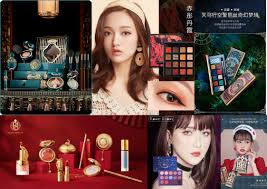
Product quality and innovation 4,444 consumers in China are becoming more conscious about product safety and ethics, leading many brands to pay attention to these issues in their products.
For example, Perfect Diary, one of China’s top home cosmetics stores, prides itself on clean beauty standards and uses quality ingredients in all its products.
Innovation is another important factor that distinguishes quality cosmetic products from other brands. Shiseido’s Future Solution LX skin care series using high technology or MAC’s limited edition collection with famous designers such as Giambattista Valli can be given as examples of this.
This new product attracts the attention of customers looking for originality and uniqueness in their choice of cosmetics.
Collaboration With Local Influencers (KOL)
Partnering with local influencers, also known as key opinion leaders (KOLs), has become a key marketing strategy for many cosmetics brands in China. KOLs have a huge following on social media platforms. This is why these products can reach a wider audience and build trust among Chinese consumers.
Suitable For Local Tastes And Preferences
To stay current as a foreign cosmetics brand, you must understand local trends and trends. For example, many Chinese consumers prefer products with a “natural” appearance. This is why BB creams and tinted moisturizers are so popular.
Chinese herbal ingredients such as ginseng and pearl powder are increasingly used in skin care products. To achieve these changes, some global beauty brands such as L’Oréal have incorporated traditional Chinese products into their products with great success.
Chinese Cosmetics Brand
Chinese cosmetics brand e-commerce and online sales platforms (Tmall, JD.com etc.)
Popular e-commerce platforms such as Tmall and JD.com have become important players in the cosmetics industry. Local and foreign cosmetic products use these sites for sales.
International cosmetics brands such as L’Oreal and Unilever opened stores on Tmall. Chinese beauty companies such as Hanashiko, Colorkey and Judydoll sell their exclusive products on the platform.
Social media presence and participation (such as Weibo, WeChat, etc.)
This channel allows beauty brands to promote their products and increase consumer awareness in China.
For example, Top List has more than 20 million followers on Weibo and more than 4 million followers on TikTok (China Douyin). Here they often invite well-known influencers (KOLs) to use their products in teaching or share reviews of their new releases.
Social media is also an important tool for building customer loyalty by creating communities around common interests or values. This approach is evident when looking at Colorkey Cosmetics’ Xiaohongshu (RED) concept. The brand is planning an interactive session where customers can share photos that showcase their unique style using Colorkey’s color palettes.
Chinese Makeup Brands
Over the past four years, China’s new cosmetics industry has grown rapidly. In the 2nd and 3rd parts of this article, how and why this development occurred and various names will be discussed, but this time I want to focus on the name Florasis. Florasis (花西子1) was founded in 2017 and is dedicated to promoting Chinese beauty and culture. This is a breath of fresh air because, as we see, cosmetics have a lot to do with Chinese culture.
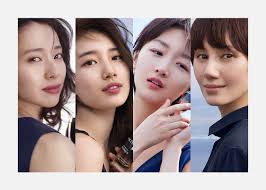
Florasis is the art behind its collection. According to their website, the company hires professional craftsmen to help create the packaging.
There are many books inspired by various aspects of Chinese culture, so I will give a brief summary of each book, since detailed information has gone through this article – these (some) could be entire books!
These two necklaces are now in the Bowers Museum. Various decorations are made by embossing (a type of back hammering), forging and other methods. Silver itself symbolizes light, the moon, fertility and protection from evil, it also represents wealthy women and plays a role in negotiations. Families go to great lengths to treat their daughters and buy more whenever possible. Mainly worn during the great festival, the head, comb, earrings, necklaces, breastplates, bracelets, rings, ornaments and weights shown here weigh about twenty kilos.
Beautiful designs are designed to attract competitors who look at each garment as a measure of the wearer’s quality. In marriage, money is the woman’s dowry and is passed from mother to daughter. Although the Hmong jewelry tradition reflects the sexual orientation of their culture, some wise people use it to help their communities escape poverty and ensure the practice does not disappear.
Hmong Necklace And Bridal Collar
The Miao produced intricately embroidered clothing as well as silver jewelry. . Their embroideries reflect the worldviews, values, history, beliefs and social changes they have experienced over the centuries, using cotton and woolen hair to create embroideries according to the pattern on the arms, sleeves, collar and front parts of the tunics. Florasis’ box set opens to reveal three drawers decorated with Miao embroidery-style patterns.
This beautiful example is also from the Bowers Museum. The butterfly is a motif in Miao embroidery, and part of Miao folklore is the story of the “Butterfly Mother” from whom all Miao people are descended. Legend has it that the mother butterfly laid 12 eggs, one went to Miao, and the rest hatched into other animals on the ground, so Miao is not alone.
Miao Embroidery
Florasis called the Hmong palette the Butterfly Palette and said the pattern was made of a butterfly, but I can’t say I saw it. To me it looks like a floral design.
Next up is the Impression Dai series, which uses the art and culture of another minority in China, the Dai. According to the website, “Dai people have close historical and geographical proximity to Laos, Thailand, and other ethnic groups. There are more than one million Dai people in China, mostly in southern Yunnan.”
For the Dai people, the peacock “symbolizes beauty and peace and is said to be a wonderful thing.” In fact, peacocks are so important in Dai culture that they form an entire dance!
This folk spectacle today dates back thousands of years and follows beautiful birds. In 2006, it was included in China’s national cultural heritage along with Miao embroidery. Also, if you look closely at the background of the powdered ivory side, you will see a beautiful relief pattern. The Florasis website says the collection is inspired by Dai brocade. Again, there is a lot of information written about Dai brocade, so I cannot go into detail and I cannot find a brocade with a similar pattern, but it looks similar to the fabric.
Dai Powder Lipstick
For some reason I never want to buy Dai Impression lipstick. I think I thought I had purchased it but when the package arrived I realized I had forgotten. Ah well I will buy it again but since it is limited edition I need to get it soon. This lipstick is beautifully crafted, similar to the Miao lipstick but with a peacock pattern.
The Florasis website states that the lip formula contains the elements of dendrobium nobile and lotus, an orchid native to Southern China, and claims that these ingredients are used by the Dai people.
I couldn’t find any evidence to support this claim, but orchids and lotus flowers have been used in traditional Chinese medicine and cosmetics for centuries, so it seems logical.
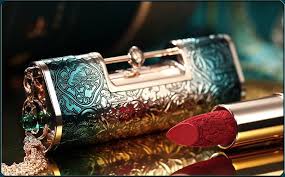
Florasis’ next treasure is the East Face Monster Palette. Each chapter shows an animal associated with one of the four zodiac signs according to the stars, also known as the Four Beasts (it is not clear why Florasis named the palette the Beast of the East).
The first is the green dragon, representing spring. (I think they’re talking about the Azure Dragon… maybe they misinterpreted the azure color as green instead of blue.)
While I like the design and overall concept, mixing these four beasts together seems a bit crazy to me, considering the four beasts are also seen as guardians of the four landmarks.
